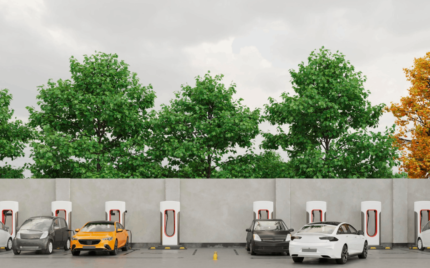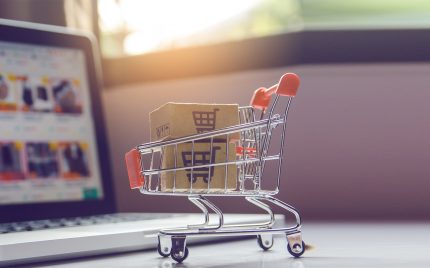
Nowadays, the Internet connecting things (IoT) is gradually becoming a trend to help apply technology to a strong transformation in business and customer behaviors. These trends are and will create new values and change the market in general and business operations in particular.
For business activities, emerging IoT trends include:
- The Internet connecting everything is an opportunity for the business, not merely an opportunity for technology. In the past, IoT was often seen as a technological challenge and the CIO information manager is often seen as an enterprise’s effort to manage this one. However, in order to maximize the benefits and impacts of IoT, it takes a lot of business efforts with many changes related to business practices in general.
- Implementing IoT based on many different case studies will be the path to success. The value of IoT (focusing on revenue improvement) should be strongly exploited in case studies with different business strategies. And enforcing them in a principle way will be the most reasonable way to maximize benefits from the IoT.
 Correlation of case studies and financial – impact score
Correlation of case studies and financial – impact score
- IoT gradually creates a subscriber business model, but consumers don’t like it. “Hourly payment” is a common and popular concept in recent times. Manufacturers often increase the supply of multiple service packages paid in a certain time unit. However, users don’t seem to want that to happen, especially when low-value products, not connected to IoT, are also gradually becoming “subscriber” (consumers have to pay a certain amount of money to have food sent to home)
Besides, the new trend of IoT also affects the market, including:
- Heavy industries are gradually getting more IoT applications. “Industrialization of the Internet” is gradually becoming a reality and companies are finding ways to leverage IoT, especially in the fields of oil, gas, coal, and agriculture. Meanwhile, for advanced industries, IoT is growing faster than ever, especially in the field of car manufacturing, complex equipment, and discrete production.
- Amazon and Google are at the forefront of smart houses. Smart houses have become a commercialization concept since more than 25 years ago but often do not live up to users’ expectations. However, with IoT, this concept is gradually changing. Google Assistant and Alexa are achieving their odor, especially in the field of security and privacy, as well as maximum integration with other smart devices.
- Chinese IoT companies are prevailing in the domestic market and are expanding into the global market. A lot of Western start-ups and big companies want to win a share of the IoT chance cake in China. For example, the BAT trio (Baidu, Alibaba, Tencent) in the field of cloud service infrastructure design (IaaS), Xiaomi in wearable devices and smartphones, Ayla in smart appliances. Besides, these IoT companies are also an ambition to globalize stronger than ever.
 Amazon Warehouse Service – Internet of Things of Amazon
Amazon Warehouse Service – Internet of Things of Amazon
Finally, about the technology and data story, the emerging trends of IoT are also mentioned:
- Conflict in giving access to data is reducing the impact of businesses. Data rights holders are setting more barriers in allowing who is the right person to view and use data. Moreover, governments are also setting harsh policies on privacy boundaries when using this data set. Enterprises need to look at two new perspectives: (1) Enterprises will have to share data with third-party OEMs, to create more value in production; (2) The production department will keep it separate to create a competitive advantage over the competition
- Cost pressure also needs to be determined, when businesses want to convert IoT from cloud technology to enterprise servers, especially in industries that require remote data control (such as oil and gas, aviation and transportation). These conversions may be more cost-effective for businesses instead of storing them in the cloud. Autonomous vehicles also face the same challenge. Even if there is great progress in data transmission such as 5G technology, the response time for high-speed autonomous vehicles also needs to be significantly low – what host servers at the enterprise will be more feasible.
- Cyberattacks are no longer a worrying concern among businesses. Cybersecurity is now the first thing to mention in the efforts of each CXO director. Nearly 50% of CXOs admit that they have been hacked online and in those people, more than 25% of attacks are thought to be serious and affect businesses. However, these are not the top worries when they implement IoT activities for businesses.
- Artificial intelligence (AI) has become the core of IoT in the last 2 years. Practical cases of using artificial intelligence are on the rise and there are many valuable results, especially in machine learning (ML). AI and ML are now being used in more than 60% of enterprise IoT operations, this dramatic increase comes from three main factors: Algorithm development, data proliferation and the increase in storage while achieving low cost.
Summary
IoT, is probably a transformative and appealing application for business and user behavior today, though it is still in its early stages. However, the trends are gradually increasing, and businesses that can listen, learn and adapt to IoT will easily succeed. Besides, the environment can apply IoT also become a concern when IoT gradually becomes a new trend. Businesses need to be familiar with the fields they are involved in, as well as seeking cooperation to be a leader in the industry they choose.
——————–
How do you think about this article? Please share it with us via the comment section below.
According to McKinsey Digital
————–

How do you think about this article? Please share your feedback with us via the comment section below.
PRIMUS – TOP MANAGEMENT JOBS ONLY






Like!! Thank you for publishing this awesome article.